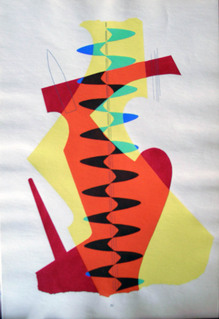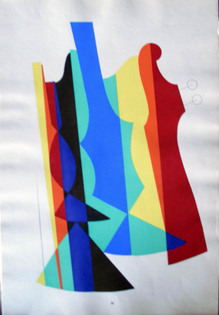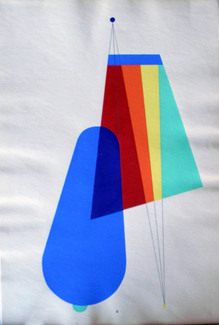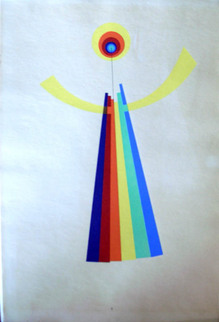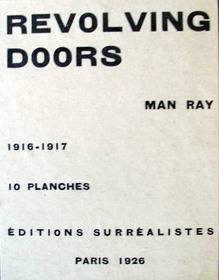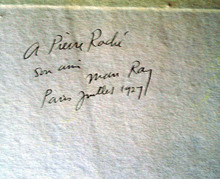In 1919, Man Ray (born Emmanuel Radnitzky, 1890-1976) had his third solo exhibition at the Daniel Gallery, run by a former saloon owner Charles Daniel (1878-1971) and the poet Alanson Hartpence (1883-1946). By this time, Man Ray was losing interest in oil painting and the show featured airbrush drawings (called aerographs) and several installations.
One of these, called Revolving Doors, featured ten collages made from colorful construction paper cut-up and pasted onto white cardboard. Each collage was framed and hinged onto a rotating support, so that the entire ensemble could be spun like a revolving door. When Daniel asked the artist to give the audience an explanation, Man Ray wrote long labels for each panel. For instance, the Dragonfly label read in part: “The lozenges of different colored wills to ascension are a fairly accurate record of the creature’s struggles.”
Man Ray moved to Paris in the 1920s but continued to explore this series in a variety of mediums, including a pochoir edition published by Editions Surréalistes in 1926. The following year, Man Ray gave a copy to Henri Pierre Roché (1879-1959, who would later write Jules et Jim.) This made its way into the Charles Rahn Fry Pochoir Collection, and ultimately to Princeton University.
Man Ray (1890-1976), Revolving Doors, 1916-1917 (Paris: Editions Surréalistes, 1926). Copy 71 of 105. Graphic Arts Collection (GAX) Oversize 2004-0007E
